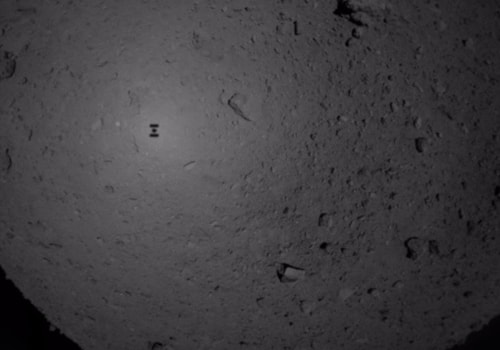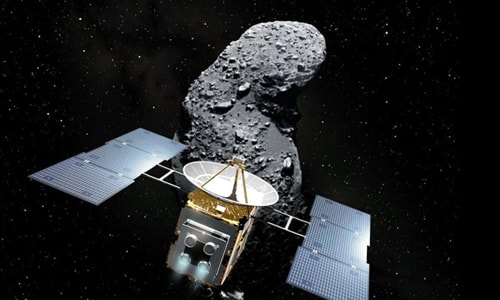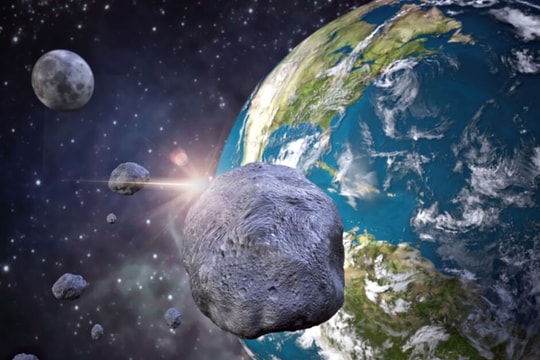Japanese spacecraft hits asteroid 300 million km from Earth
The Hayabusa 2 spacecraft is tasked with firing a projectile into the surface of the asteroid Ryugu to collect debris and bring it back to Earth.
 |
The shadow of the Hayabusa 2 spacecraft during its touchdown on the surface of the asteroid Ryugu. Photo:JAXA. |
The Hayabusa 2 spacecraft successfully made contact with the ancient asteroid Ryugu at about 6:30 a.m. this morning (Hanoi time).GuardianData transmitted back showed that the spacecraft changed direction and speed, touching down on the asteroid's surface, according to the Japan Aerospace Exploration Agency (JAXA).
Mission control received data indicating Hayabusa 2 was still functioning properly, said JAXA spokesman Chisato Ikuta. Scientists were excited about the event and were continuing to analyze data from the spacecraft.
According to the plan, when contacting Ryugu, the spacecraft must fire a bullet to stir up material on the surface, then take samples of soil and rock to bring back to Earth. This asteroid is believed to contain a lot of water and organic matter from about 4.6 billion years ago, when the Solar System was just forming.
Hayabusa 2 will need to collect 10 grams of rock and soil debris using a special tool called a “sampler”. These samples will be stored on board the spacecraft until its return, which is expected to land in Woomera, South Australia, in 2020.
 |
Hayabusa 2 flew to the ancient asteroid Ryugu in June 2018. Photo:JAXA. |
Hayabusa 2 arrived at Ryugu in June last year, after a journey of more than three years in space. The JAXA project team had planned to touch down on the asteroid in October, but postponed the mission after images showed that Ryugu's surface was rougher than expected.
Ryugu is part of a group of objects that formed in the early days of the Solar System. "Ryugu is the material that didn't get collected to form the planets. We wanted to study this asteroid because it shows what that early material was like," explains John Bridges, professor of planetary science at the University of Leicester.
Some similar material has fallen to Earth as meteorites, but they broke up and burned up in the atmosphere. They also quickly became contaminated when they hit the ground. Meanwhile, the rock samples brought back by Hayabusa 2 will help scientists study pristine meteorites.



